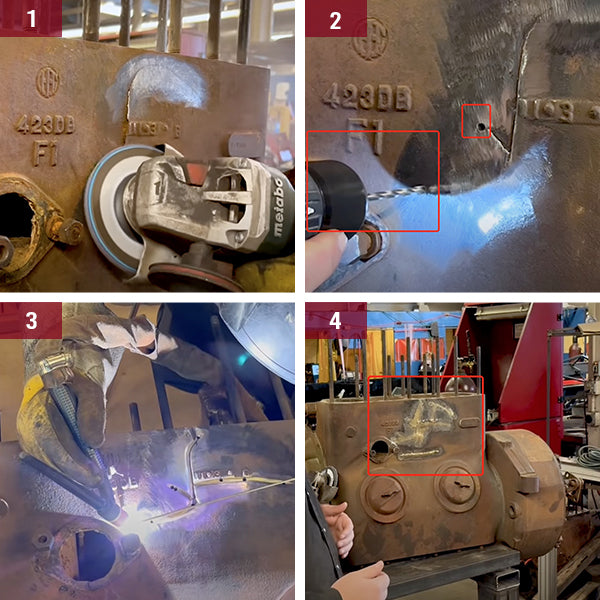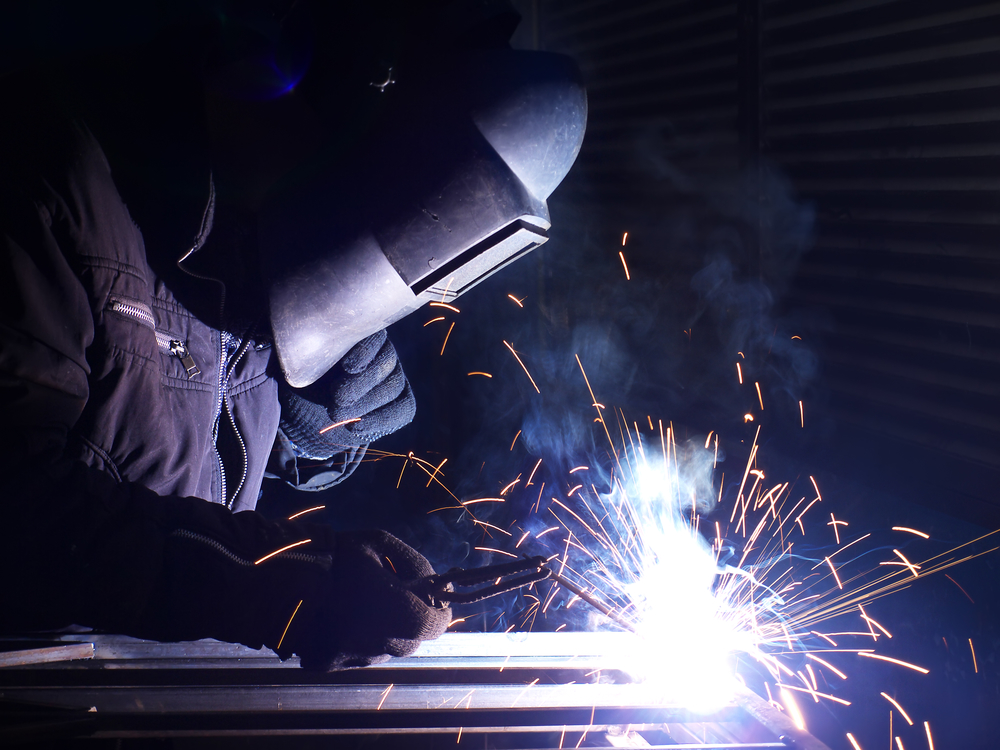Typical Welding Repair Service Issues and Just How to Address Them Effectively
Welding repair services often encounter a variety of issues that can jeopardize the integrity of the end product. Common troubles consist of inadequate infiltration, porosity, and misalignment, among others. Each defect provides unique obstacles that need specific techniques for resolution. Understanding these problems is crucial for welders intending to enhance their skills and end results. This conversation will check out these common welding repair service problems and reliable methods to address them.
Insufficient Penetration
Inadequate penetration occurs when the weld metal fails to totally fuse with the base product, leading to weak joints and possible structural failings. This concern typically stems from insufficient warmth input, inaccurate electrode angle, or incorrect welding speed. Welders might come across inadequate penetration because of a miscalculation of the essential specifications for a specific product density or kind. In addition, contamination on the base material's surface can prevent efficient bonding, intensifying the trouble. To address insufficient penetration, welders should assure ideal settings on their equipment and maintain a clean work surface. Regular assessment of welds is suggested to recognize any kind of shortages early, permitting for timely modifications and the avoidance of jeopardized structural stability in bonded settings up.
Porosity
Porosity is an usual flaw in bonded joints that manifests as small gas bubbles caught within the weld steel. This problem can endanger the stability of the weld, leading to minimized strength and potential failing under stress. Welding. Porosity generally occurs from contamination, moisture, or inappropriate welding techniques, which enable gases to get away right into the liquified weld swimming pool. To resolve porosity, welders should ensure correct surface prep work, maintain a tidy workplace, and use suitable welding parameters. In addition, picking the ideal filler material and shielding gas can mitigate gas entrapment. Normal evaluation and screening of welds can aid recognize porosity early, guaranteeing prompt restorative actions are taken, thus protecting the high quality and dependability of the welded framework
Imbalance
Misalignment in welding can develop from various aspects, including improper arrangement and thermal growth. Understanding the source is vital for reliable resolution. Numerous improvement methods are available to realign components and guarantee architectural honesty.
Reasons of Misalignment
Welding misalignment often stems from a range of underlying problems that can compromise structural stability. One key reason is improper fit-up of parts prior to welding, which can result in voids and irregular surface areas. Variations in thermal expansion during the welding process can also result in distortion, especially if the products being joined have different coefficients of growth. In addition, inadequate fixturing and securing might fall short to hold elements safely in area, causing activity throughout welding. Poorly kept tools, including welding machines and tools, may introduce disparities in the weld grain, additional adding to imbalance. Ultimately, driver mistake, originating from inadequate training or experience, can also play a significant role in creating misaligned welds.
Correction Methods Offered
Dealing with imbalance successfully requires a combination of rehabilitative strategies tailored to the specific concerns available. One usual approach is using components or jigs to hold parts in the proper setting during welding, guaranteeing consistent positioning. Furthermore, preheating the materials can aid decrease distortion and enhance fit-up. For substantial misalignment, mechanical adjustment techniques, such as making use of hydraulic jacks or clamps, can be employed to deal with the placement before welding. Post-weld warmth therapy may likewise be required to alleviate tensions triggered by imbalance. Cautious inspection and change during the configuration stage can avoid misalignment problems from becoming considerable issues, promoting a smoother welding process and enhancing total architectural honesty.
Distortion
Distortion is a typical difficulty in welding that can occur from different aspects, including unequal cooling and heating. Comprehending the sources of distortion is necessary for applying efficient avoidance methods. Addressing this concern not only enhances architectural honesty but also enhances the overall quality of the weld.
Reasons of Distortion
When based on the extreme warm of welding, products often undertake modifications that can bring about distortion. This sensation mostly develops from thermal expansion and contraction throughout the welding process. As the weld location heats up, the product expands; upon cooling, it gets, which can develop inner stress and anxieties. Furthermore, unequal home heating across a work surface can worsen these stresses, resulting in bending or bending. The sort of product likewise plays a significant role; metals with differing thermal conductivity and coefficients of development may react in a different way, leading to uncertain distortions. Additionally, bad joint design and insufficient fixturing can contribute to misalignment throughout welding, enhancing the chance of distortion. Recognizing these reasons is important for effective welding repair and avoidance methods.
Avoidance Techniques
Efficient prevention techniques for distortion during welding focus on regulating warmth input and ensuring appropriate joint design. Keeping a consistent heat input aids to lessen thermal development and contraction, which can result in distortion. Making use of techniques such as pre-heating the workpiece can likewise minimize the temperature gradient, promoting consistent heating. In addition, selecting proper joint styles, such as T-joints or lap joints, can improve stability and minimize stress and anxiety focus. Implementing correct fixturing to secure the work surfaces in area better aids in maintaining alignment throughout the welding procedure. Staggered welding series can distribute heat a lot more uniformly, avoiding local distortion. By applying these methods, welders can significantly decrease the likelihood of distortion and boost the total top quality of their welds.
Splitting
Fracturing is an usual problem come across in welding fixings, my latest blog post commonly resulting from different factors such as improper air conditioning rates, material choice, or inadequate joint preparation. The event of splits can greatly jeopardize the stability of the weld, bring about prospective failures during operation. To address this concern, welders have to first analyze the source, making sure that products are suitable and properly picked for the specific application. In addition, regulating the air conditioning rate during the welding procedure is essential; quick cooling can cause tension and bring about fracturing. Appropriate joint style and preparation likewise contribute to reducing the risk. Executing these techniques can boost weld high quality and longevity, eventually minimizing the probability of splitting in completed weldments.

Insufficient Blend
A significant problem in welding repair work is incomplete blend, which occurs when the weld steel does not appropriately bond with the base material or previous weld passes - Fabrication. This defect can bring about weak points in the joint, possibly endangering the integrity of the welded structure. Aspects contributing to incomplete blend consist of insufficient warmth input, improper welding technique, and contamination of the surfaces being joined. To address this concern efficiently, welders must guarantee correct pre-weld cleansing and surface area prep work, along with adjust their welding criteria to accomplish adequate infiltration and blend. Normal evaluation during the welding process can also assist identify incomplete blend early, enabling for timely corrective actions to improve the total top quality of the weld
Overheating
While welding repairs can improve structural honesty, overheating presents a significant obstacle that can cause product degradation. Too much warm throughout welding can alter the mechanical properties of metals, resulting in reduced stamina, boosted brittleness, and warping. This phenomenon is specifically essential in high-stress applications where architectural reliability is critical. Determining overheating can involve aesthetic inspections for staining or distortion, as well as checking temperature throughout the welding procedure. To mitigate the dangers associated with overheating, welders ought to use proper strategies, such as controlling heat input, changing travel rate, and using ideal filler materials. Additionally, implementing pre- and post-weld warmth treatments can assist recover product properties and improve the overall quality of the repair, making sure long-term efficiency and safety and security.
Regularly Asked Inquiries
What Are the Typical Signs of a Welding Defect?

How Can I Check My Welds for Quality?
To evaluate welds for quality, one can utilize visual inspections, ultrasonic screening, and radiographic approaches. Each technique guarantees architectural stability, recognizes issues, and confirms adherence to defined requirements, eventually enhancing the reliability of the welded joints.
What Safety Precautions Should I Take While Welding?
When welding, one must prioritize security by using appropriate personal safety devices, guaranteeing correct air flow, protecting combustible products away, keeping a tidy workspace, and being aware of surroundings to stop accidents and injuries.
Can I Repair a Weld Without Remodeling the Entire Joint?
Repairing a weld without redesigning the entire joint is possible, depending upon the damage (Montana Mobile Welding and Repair Belgrade Welding). Strategies such as grinding, including filler material, or using a welding procedure can efficiently attend to certain defects while maintaining stick welding stainless steel the surrounding structure
What Equipment Are Essential for Efficient Welding Services?
Vital devices for reliable welding repairs include a welding device, cable brush, mill, protective equipment, clamps, and filler products. Each tool plays an important function in ensuring top quality and security during the repair work procedure. Porosity usually emerges from contamination, wetness, or improper welding methods, which permit gases to run away into the liquified weld pool. Improperly maintained equipment, consisting of welding equipments and tools, may present incongruities in the weld grain, more contributing to misalignment. When subjected to the intense visit this web-site warmth of welding, products often undertake changes that can lead to distortion. Breaking is a typical issue come across in welding repair services, commonly resulting from different aspects such as incorrect cooling rates, material option, or inadequate joint prep work. A substantial issue in welding repairs is incomplete blend, which takes place when the weld steel does not sufficiently bond with the base product or previous weld passes.
Comments on “What Belgrade Fabrication uses as go-to strategies for dealing with incomplete fusion”